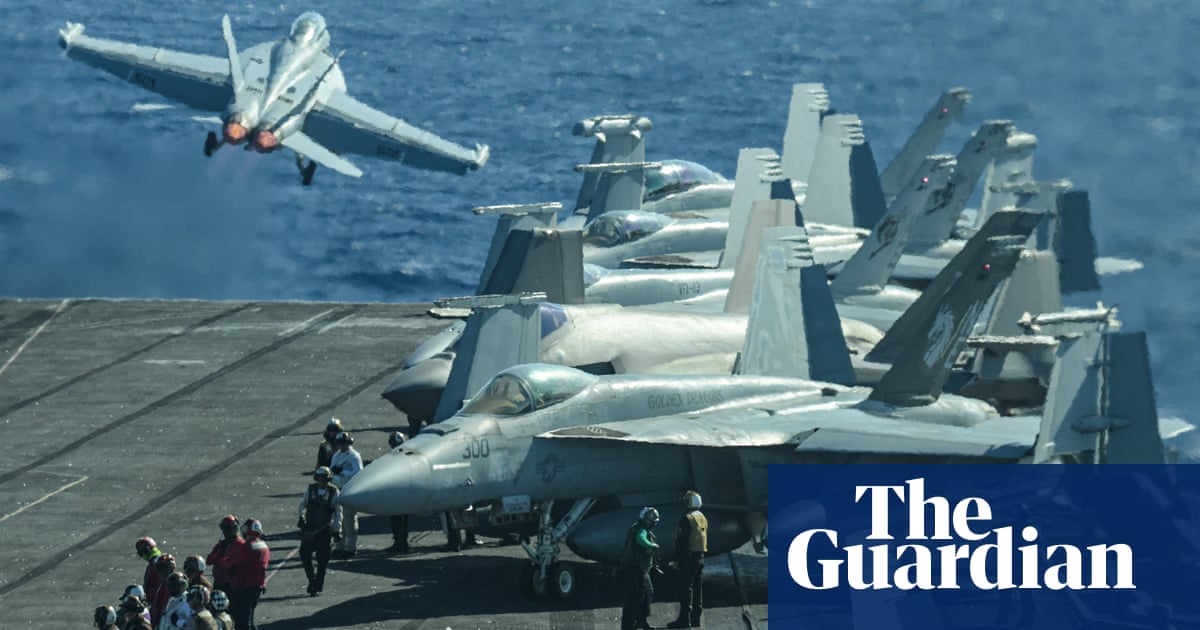Photo credit: www.theguardian.com
On Sunday, two U.S. Navy pilots were shot down over the Red Sea due to what appears to be friendly fire, as reported by the U.S. military. This incident marks a significant escalation in the risks faced by troops engaged in operations against Yemen’s Houthi forces, particularly following more than a year of their activities.
Fortunately, both pilots managed to eject from their damaged aircraft and were rescued, with one sustaining only minor injuries. This event highlights the heightened dangers in the Red Sea corridor, which has become increasingly perilous due to ongoing Houthi attacks on shipping routes, even in the presence of U.S. and European naval coalitions tasked with patrolling the area.
At the time of the incident, U.S. military forces were conducting airstrikes against Houthi targets in Yemen, although Central Command (Centcom) did not disclose the specific objectives of those missions. The shot-down aircraft was an F/A-18 Super Hornet from the USS Harry S. Truman aircraft carrier.
According to Centcom, the incident occurred when the guided missile cruiser USS Gettysburg, part of the Truman Carrier Strike Group, mistakenly fired upon and hit the F/A-18. An investigation into the circumstances surrounding this error is currently underway.
The aircraft involved was a two-seat F/A-18 Super Hornet, linked to the “Red Rippers” of Strike Fighter Squadron 11 based at Naval Air Station Oceana in Virginia. The reasons for the confusion that led to the misidentification of the aircraft remain unclear, particularly given that ships within battle groups typically maintain robust radar and radio communication.
Nonetheless, Centcom noted that earlier engagements had seen U.S. warships and aircraft successfully intercept multiple Houthi drones and an anti-ship missile. The rapid pace of incoming hostile fire has pressured sailors to make split-second decisions in high-stakes situations.
Since the USS Truman’s arrival in the region, the U.S. has intensified its airstrikes against Houthi positions in response to missile attacks in the Red Sea and its vicinity. However, the deployment of a U.S. naval group could provoke further aggression from the Houthis, reminiscent of previous confrontations involving the USS Dwight D. Eisenhower, which experienced its most intense combat operations since World War II earlier this year.
On the night preceding the incident, U.S. warplanes conducted airstrikes that shook the capital city of Yemen, Sana’a, which has been under Houthi control since 2014. Centcom stated that these strikes targeted key military infrastructure, including missile storage and command facilities.
Houthi-controlled media reported on the attacks, which also extended to areas around the port city of Hodeida, although they did not provide details about potential casualties or damage. In Sana’a, strikes seemed particularly focused on a mountainous area known for military installations. Subsequently, the Houthis acknowledged the downing of the aircraft over the Red Sea.
Since October 2023, coinciding with the onset of the Israel-Hamas conflict, the Houthis have reportedly targeted around 100 merchant vessels using missiles and drones. Their campaign has seen the seizure of one vessel and the sinking of two, which has resulted in the deaths of four sailors.
While many missiles and drones launched by the Houthis have been intercepted by U.S. and European coalitions, the rebels assert that their strikes focus on vessels linked to the U.S., UK, or Israel, in a bid to pressure for an end to hostilities against Hamas. However, many of their targets have proven to be of limited or no relevance to the ongoing conflict, including ships bound for Iran.
Moreover, the Houthis have also stepped up direct attacks against Israel using drones and missiles, leading to retaliatory airstrikes from Israel.
Source
www.theguardian.com

